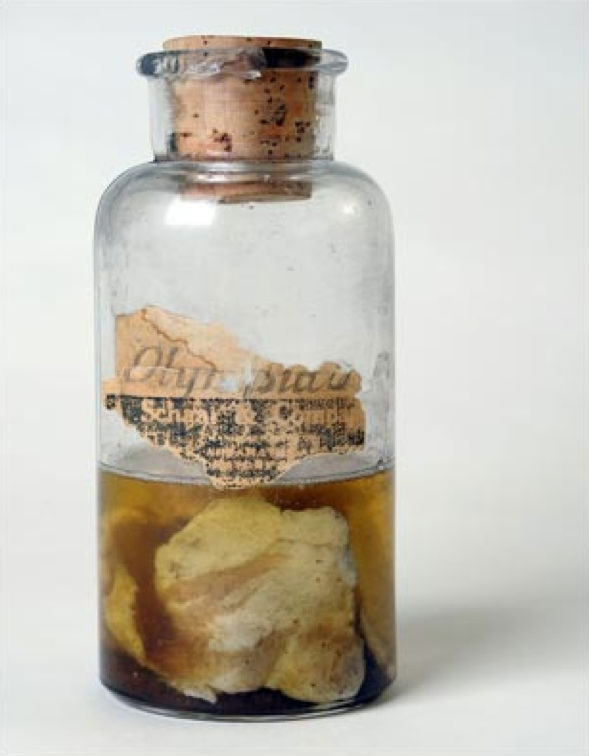
The Kentucky Meat Shower
3 March 1876. Olympia Springs, Bath County, northeast Kentucky. The farm of Allen Crouch. Just before noon.
The farmer’s wife sat on the front porch, making soap. The late-Reconstruction-era day veered from normal into the macabre horror of Edgar Allan Poe as it began to rain. Instead of crop-nourishing water, Mrs. Crouch started to hear slaps. The New York Herald described the precipitation she witnessed as “The Carnal Rain.”
Mrs. Crouch – we don’t have the first name in the newspaper reports because it’s 1876 – watched as raw meat fell from the sky.

According to Crouch, meat rained for several minutes. Most pieces were approximately 2 inches by 2 inches, though some measured 4 inches by 4 inches. Mrs. Crouch described the material as “gristly.” She claims the sky was clear, yet the meat fell like “large snowflakes.”One can only imagine the horror of the scene, as idyllic farmland turned into bloody putrescence. The married couple believed the event was a sign from God.
At this point, one might dismiss this story as a hoax, at worst, hysteria, or a simple misidentification, at best. In the backdrop of 1876, the word of two non-scientists fits more easily into lore and mythology than into serious consideration. Yet, we don’t have to lean on the honesty and accuracy of the Crouches.
Word of the incident spread to the locals. People showed up to witness the chunks of meat. A man named Harrison Gill noted meat strewn about the ground and sticking to fences. The flesh seemed to be real, so what was it? Those who were there floated various animal origins: cows, sheep, deer, horses, or even bears. Some even wondered if it were human.
Because this incident happened in Kentucky, two gentlemen even decided to taste the meat. Their verdicts differed; it was either lamb or venison.

This mystery had no clear answer, so specimens went to various universities and scientists. Scientific American, The New York Times, and others published articles and reports.
One scientist, Leopold Brandeis, thought he knew the answer: cyanobacteria called Nostoc. This bizarre substance is colloquially called star jelly, troll’s butter, spit of moon, witch’s butter, or witch’s jelly. Nostoc is a combination of “nostril” and the same word in German, nasenloch, a name likely bestowed because the bacteria look like nasal mucus.
Nostoc exhibits an interesting attribute. Normally, a colony of the bacteria cannot be seen by the naked eye. But, when it rains, this strange organism swells and appears to be a gelatinous mass. For many centuries, humans believed Nostoc came down in the rain, perhaps flying around the sky. When precipitation fell, suddenly the jelly popped up. Makes sense. Brandeis purported a flesh-colored version of the bacteria caused the meat shower in Kentucky.


The Nostoc theory seems plausible. However, it faces a few issues. Firstly, Mrs. Crouch claimed the sky was clear. Without rain, how could the bacteria jellify? Second, some bodacious dudes tasted the substances. They said it tasted like lamb or venison. Not exactly similar to shoveling in some bacterial jelly.
Dr. Allan McLane Hamilton examined a sample and deemed it to be lung tissue from either a horse or a human infant, “the structure of the organ in these two cases being almost identical.” Other anatomists claimed their samples were muscle or cartilage or more lung, backing up Mrs. Crouch’s descriptor of “gristly.”
If this hail really were meat, how in the world did it fall on the Crouch farm?

Contemporaneously, some scientists and locals subscribed to the theory that today holds the most adherents: vultures did it.
Vultures feature extraordinary digestive systems. Their stomachs have acid to levels that would ravage other beings, which allows them to eat all sorts of rancid gunk. Rotting carcasses stand no chance in the acid bath. They also tend to overeat. A vulture never knows when the next disgusting meal will arrive, so the best survival technique is to gorge. What happens if danger arrives when a vulture has overfilled the gas tank?
Joe Walston, the Vice President for Field Programs at the Wildlife Conservation Society told Vice, “Meat is heavy. If you want to take off quickly with a huge amount of weight, the first thing you’re going to do is vomit.” To make sure they can fly, vultures will retch, continuing to do so even in the air sometimes.
Though we’ll never know for sure, likely a wake of vultures dined on a dead animal. Suddenly, they needed to jettison the area, which means they needed to jettison the meat in their stomachs. Below, Mrs. Crouch made soap and became witness to one of history’s strangest rain showers.
Of course, some still hold out for an odder, more meaningful reason. The Crouches believed the meat arrived as an omen from above. Others attempt to connect the meat to other anomalous precipitation throughout the ages, such as raining frogs or fish.
As always, cue one of our favorite images!

Further Reading and Exploration
Flesh Descending in a Shower – Original New York Times Article
The Carnal Rain – Original New York Herald Article
The Great Kentucky Meat Shower mystery unwound by projectile vulture vomit – Scientific American
The Mystery of the Kentucky ‘Meat Shower’ – Vice












